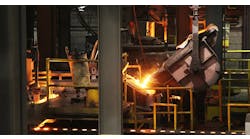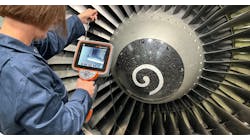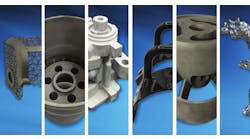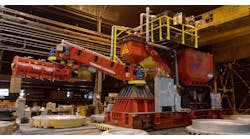In the high-tech world of wireless telecommunications, "precision" takes on a new meaning. Anritsu Co., a developer of testing and measuring devices for telecommunications, optical, and wireless systems, has replaced machined RF shields with precision diecast parts in its handheld cable and antenna analyzers. The switch, executed by Californa-based Alloy Die Casting, has reduced the unit costs for about a dozen different shields across Anritsu's Site Master series of analyzers, an investment on which the firm estimates a six-month payback.
Anritsu Co., Morgan Hill, CA, is the U.S. subsidiary of Anritsu Corp., which has supplied communications test and measurement solutions for more than 110 years. It delivers technology and services for wired and wireless communication systems, including: wireless, optical, microwave/R, and digital instruments; and operations support systems for R&D, manufacturing, installation, and maintenance. Anritsu supplies precision microwave/RF components, optical devices, and high-speed electrical devices for communication products and systems — including the Site Master series.
This family of analyzers helps field technicians perform verification and fault location testing to detect problems before they become costly, time-consuming system failures,” explained process engineer Sam Krull. “Their capabilities include precision return loss/VSWR, cable loss, and distance-to-fault (DTF) measurements. The RF shields are an important element in these designs, as they prevent crosstalk within the devices,” he said. Site Master Cable and Antenna Analyzers are the leading choice for installation, troubleshooting and maintenance of microwave cables and communication systems in cellular and broadcast industries, as well as in aerospace and defense fields.
“Most of these components are produced by traditional machining from plate or bar stock at first,” Krull continued. “Because we’re a low-volume, high-mix manufacturer, we sometimes don’t have the opportunity to switch to more cost-effective production techniques. But, when we do see a chance to make a change, the earlier we take that step, the more we can save over hog-out machining. We’ve seen payback in these parts in as little as three months.”
Anritsu contracted Alloy Die Casting to develop the replacement designs, which are cast from A380 aluminum. “These shields are fairly complex, which causes some casting firms to shy away from smaller production runs,” observed ADC design engineer Gary Gray. “But, we’ve developed a process for designing diecast tools and manufacturing techniques for intricate, close-tolerance parts that other shops might avoid in low to medium volumes.”
Alloy Die Casting has manufactured complex aluminum and zinc/aluminum diecastings for more than 50 years. Customer-furnished or jointly-developed precision designs are produced for military, aerospace, medical, automotive, and industrial applications. ADC is ISO-9001:2000 and AS-9100B registered, and meets strict industrial and military specifications, including MIL-I-45208. It supplies castings up to 300 in2 in surface area, with engineering support, custom tool design and fabrication, CNC machining, and complete turnkey finishing. It also supplies cast-in-place metal inserts and decorative/protective coatings, and bonds seals and other elastomer components to castings to produce a complete subassembly.
According to Gray, the dimensions of for Anritsu's Site Master shields were a great challenge. “These are very thin-walled designs,” he said. “Some of them are just 0.030-in. thick, with fairly complex geometry. Any time you get below 0.060 in. in an aluminum casting, you can run into complications, so it’s important to get the right balance of injection speed and venting capacity, as well as very precise temperature control.”
All the shields are cast from single-cavity tools, typically on a 250-ton press. Raw ingots are melted in a furnace at approximately 1,200°F. The small 2-in. plunger size delivers a fill time of about 25 milliseconds (0.025 seconds), yet maintains a relatively low gate velocity around 1,200 in./sec. Depending upon the specific shield being cast, shot sizes range from four ounces to about a pound, and ADC usually runs at a conservative speed of 70-80 cycles/hour.
“We want the injection speed to be fast enough to fully atomize the material and give us a quick fill-time,” Gray continued. “But, we have to temper that with the understanding that higher gate velocities will erode the tool steel more quickly, and can shorten die life.”
Once the cast parts are removed from the mold, finishing includes a straightening operation and as many as 19 through-holes, two of which are threaded. ADC uses a single-spindle CNC manufacturing center for machining, drilling and tapping, which requires about 6 minutes each.
“Drilling the holes rather than casting them in place helps us to maintain closer tolerances and minimize pin breakage,” Gray continued. “If we were running large quantities at a time, we’d consider a multi-spindle drill operation, but in these volumes, drilling one at a time is still pretty efficient.” The shields are then sent out for anodizing to help protect them from corrosion.









